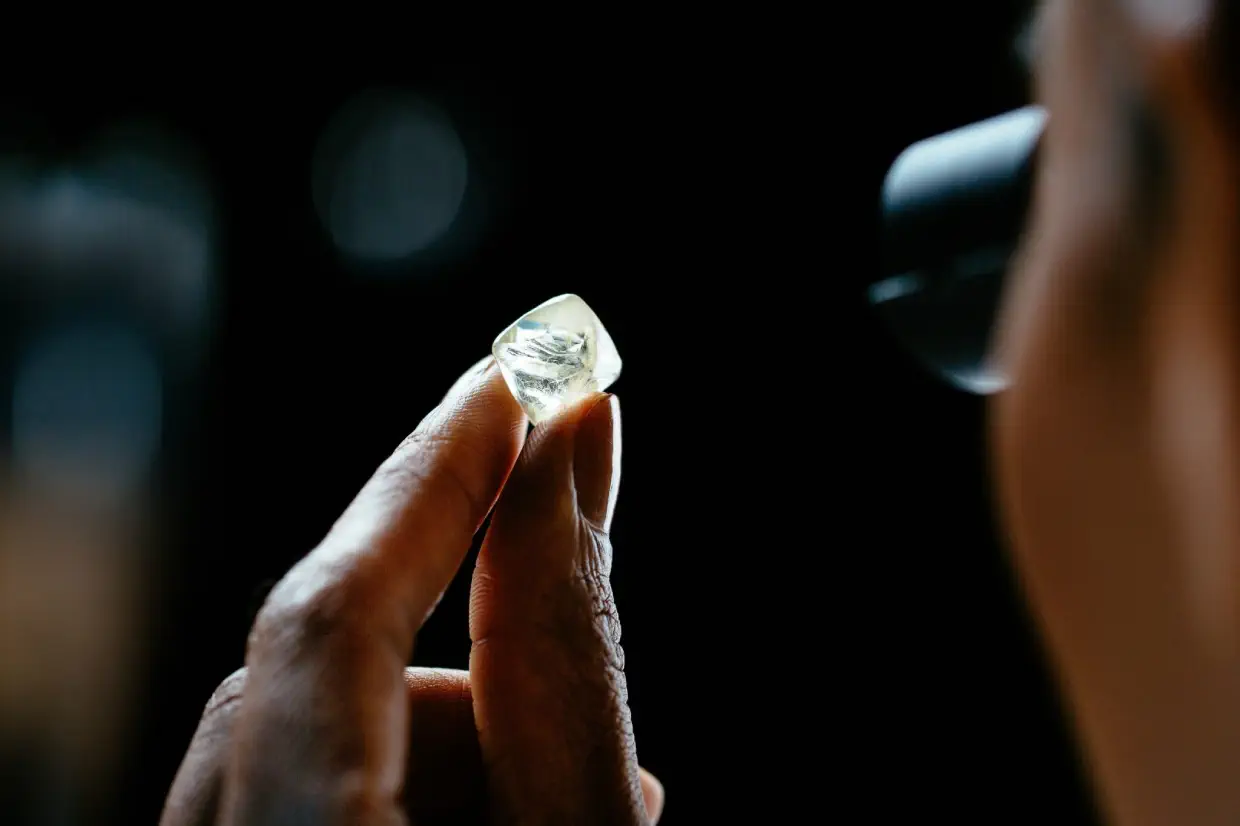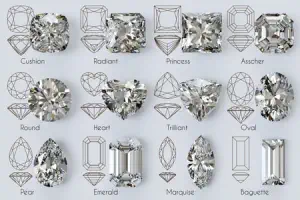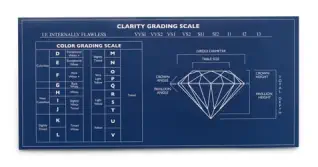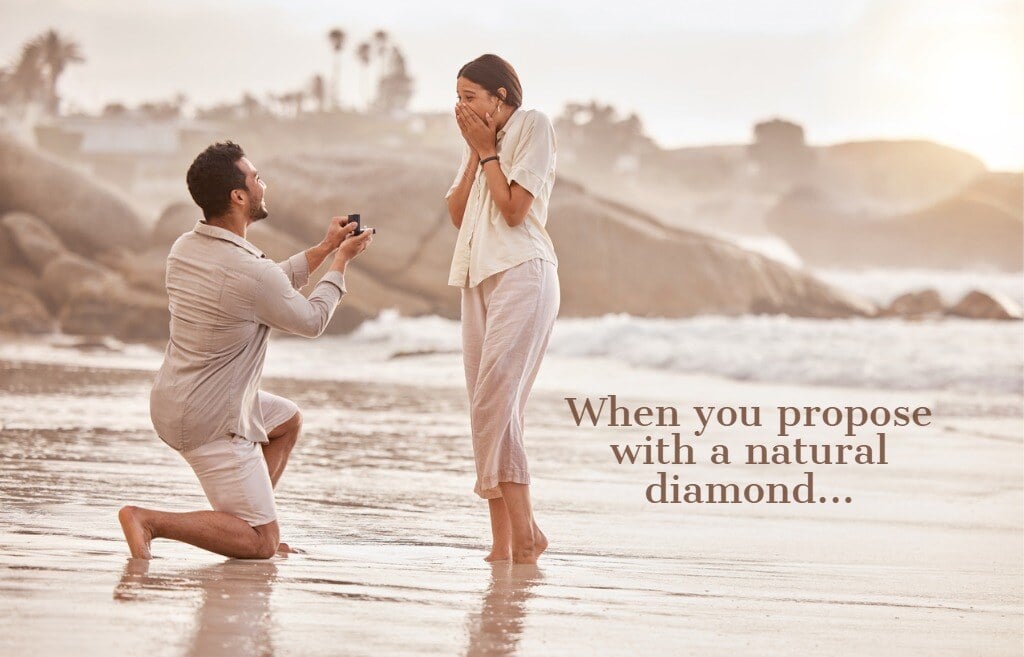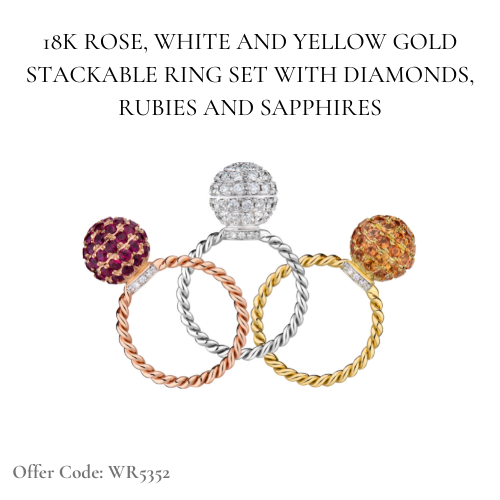The three diamonds he has in front of him are similar in size (0.73ct, 0.82ct, and 0.92ct) but differing in clarities and colours (D — G, VVS2 — SI1). According to the sales person, they are also of substantial cut quality, let’s imagine this particular retailer calls them a “premier cut”. Samir asks to take a closer look using the retailer’s available tools such as the Ideal scope, ASET scope, hearts & arrows scope, and again, examines the grading reports. Although he isn’t tremendously confident, he remembers reading online about the preferred proportions on a GIA excellent cut diamond.
Samir eliminates one diamond because he isn’t happy with the hearts & arrows that he sees, but now he can’t decide on the two that are left in contention. The key differentiating factor for him comes down to the size (carat), and Samir seems keen on the larger (0.92ct) diamond. Unknown to the sales person, Samir has decisively settled on the larger diamond by himself. It has all his requirements on ‘cut’, and more specifically, it comes at a price he is comfortable with, it’s bigger than what he thought he could afford!
However, one question nags him. Why is the larger diamond (that he prefers), cheaper than the smaller (equally well cut) diamond? This seems too good to be true?
He asks?
The salesperson who up until now has done an excellent job guiding Samir makes a mistake in telling him that the smaller diamond is of 'better' quality than the larger diamond. Samir is confused because now he feels like his choice of the larger diamond is inferior. The larger diamond, although preferred by Samir, makes him feel like he is cheap. Or misinformed.
Samir listens more closely. He hears about the smaller diamond having a ‘better’ clarity, and that although it’s cut is similar to the larger rock the colour is also ‘better’ and that’s why it’s more expensive. Now he is torn. Instead of settling on a diamond he was already quite willing to pay for, he politely asks the sales person to allow him a few days to think about it and shows himself the exit.
The sales person never hears from Samir again.
The Rarity Approach
Now, let’s take the same scenario but change the approach on Samir. All things being equal, Samir is once more wondering why the smaller diamond is more expensive when the two look the same to him because, to his eye, they have the same approximate clarity, precision cutting, and colour
The fact is, the colour grade of the smaller diamond is rarer, hence the price difference. However, since a diamond’s colour is graded on its side, in diffused light, against a flat white background, it is often difficult if not impossible, to see any difference to the untrained eye, when the diamond is viewed mounted in a face-up position in a brightly lit store surrounding.
By saying one diamond has a 'lower' colour, the jeweller risks losing the sale because the customer clearly wants the larger, equally well cut diamond, albeit ‘lower' colour. A positive approach, and in my opinion, the correct approach, is by pointing out that the larger diamond has a colour grade that is less rare, but a size that is rarer. Then an excellent sales person will quickly show how wonderful it is that when it’s in the setting, it will also be impossible to see the difference between the two diamonds, which in most cases is a reality. Additionally, the clarity of the smaller diamond is rarer (VVS2) which is pushing up the price, but the larger diamond also has a less rare clarity grade (SI1).
With the combination of the rarest size amongst the three as well as an apparent colour that isn’t really inferior to the smaller diamond, just less rare, Samir now feels confident. Samir can clearly understand that although he is paying less for a larger stone, he is getting a rock that is special because of its single rare attribute, the size. The colour may be 'lower', but he now understands it isn’t a deal-breaking trade off.
He is happy with his decision because he now has a diamond that is larger than what he expected he could afford, and that makes him feel great!
The salesperson makes the sale. Samir is a happy customer.
The danger of focusing on only one criterion
It shouldn’t come as a surprise that when choosing a diamond, like most things, focusing too heavily on a single factor inevitably causes you to miss out on potential opportunities to obtain something that is appropriate. In the two scenarios, we saw Samir tackle a debate about which diamond to buy. In most situations, consumers and jewellery shops take the singularly focused approach on the 'cut' which greatly emphasises the 'quality' factor of a diamond over all else. This factor surely does have value, but it shouldn’t be the focus of a diamond's rating because diamonds are not a homogeneous product and thus quality isn’t, in my opinion, the only appropriate benchmark. Diamonds are a natural product, and thus should be treated as such.
As consumers, we readily buy when we feel the point of sale has validated our decisions rather than contested them. No one likes to hear that their judgement of something is ‘wrong’ or misinformed, that’s just embarrassing. If we get challenged, it should be in a skillful and intellectual way, and not everyone is good at that. At Facets, we know why each diamond is unique and the factors that make one diamond rarer than the other.
To check out our collection of rare diamonds, meet with us
